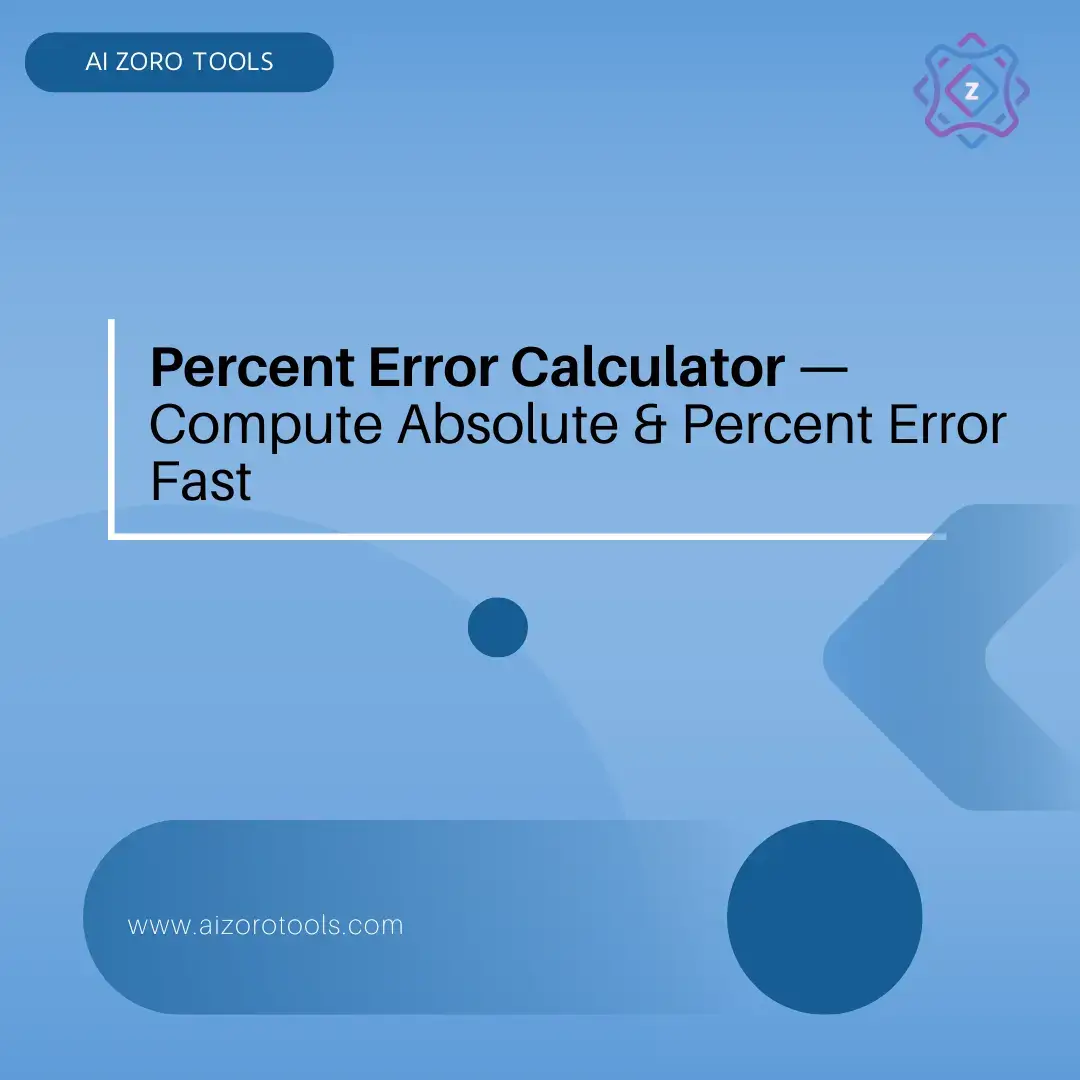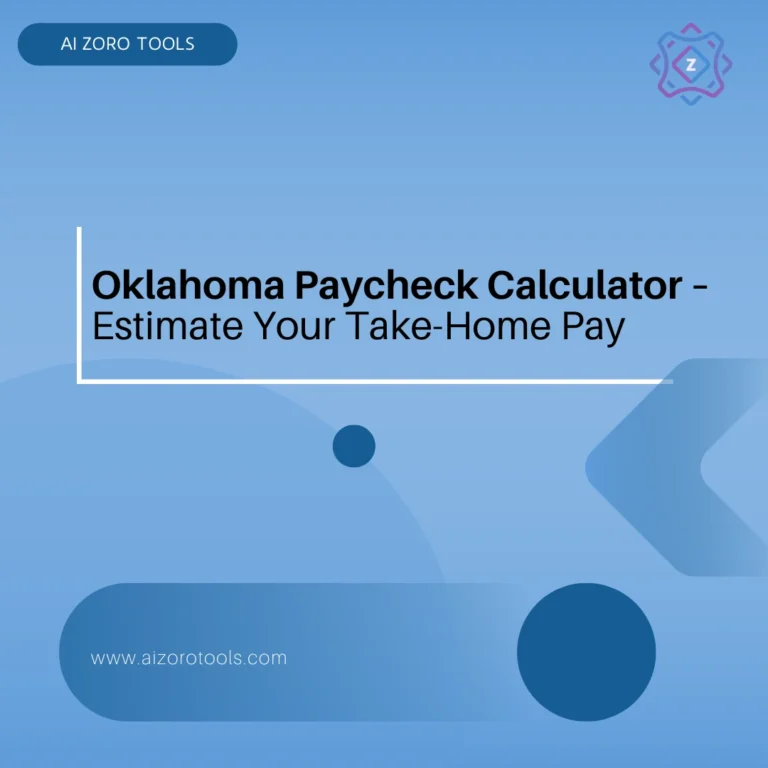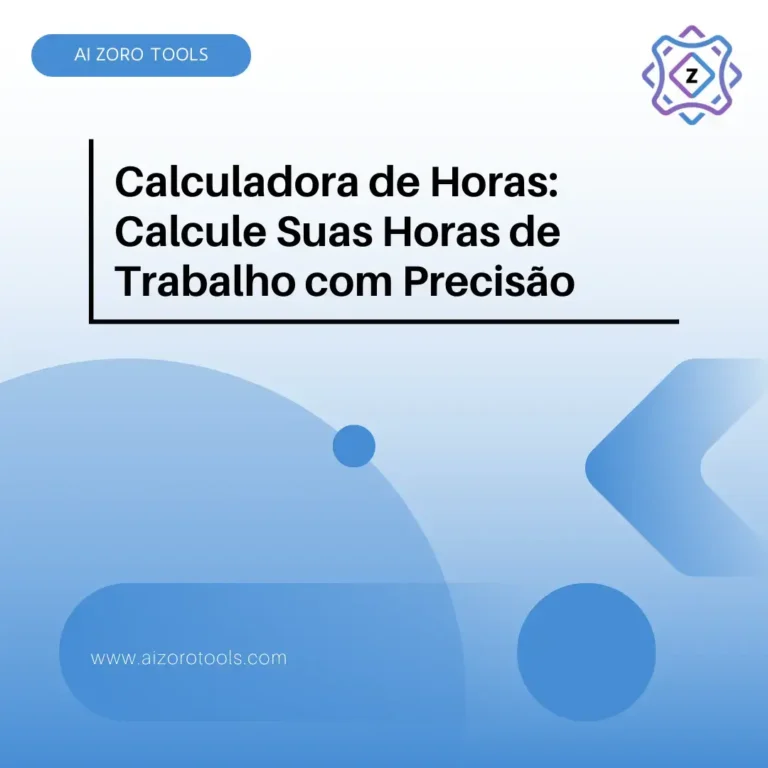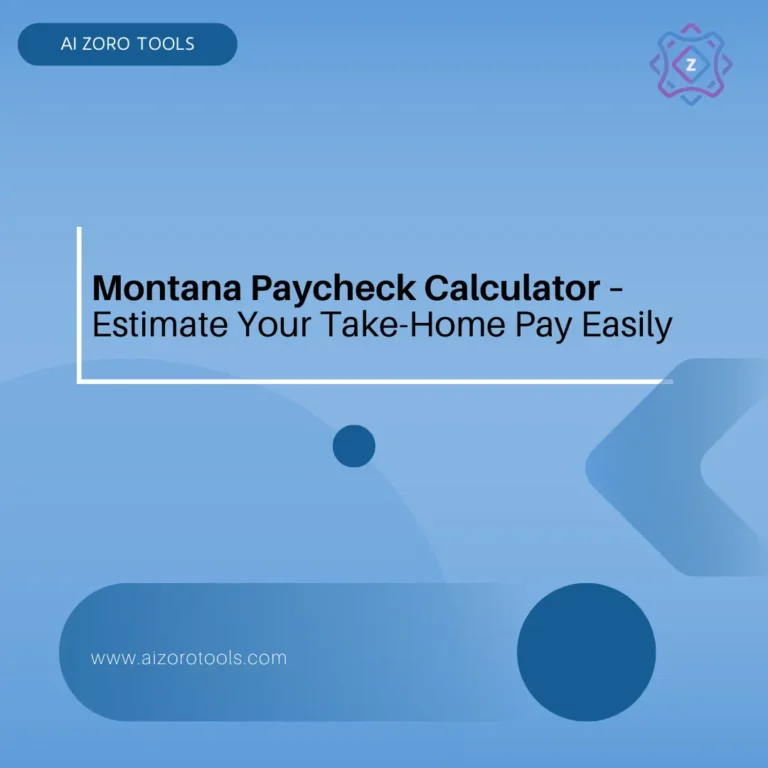Introduction
When you do an experiment, make a measurement or compare a measured quantity to a known standard, one of the first questions is: How close am I? The Percent Error Calculator tool at AizoroTools.com can get you the answer in an instant, and in easy-to-explain words.
Simply type in your experiment value (what you measured) and the theoretical value (the accepted or true value) and the “calculator” gives the following answer:
-
Absolute error (difference between the two),
-
Percent error (how large that difference is relative to the theoretical value), and
-
A short interpretation so you know whether the result is excellent, acceptable, or needs investigation.
This is the simplest, most practical tool for students, lab techs, engineers, and anyone comparing measured vs expected values.
📏 Percent Error Calculator
Compare your experimental value to the theoretical value.
What Is Percent Error?
Percent error is a measure computed between an experimental (measured) value and a theoretical (accepted) value expressed as a percentage of the theoretical value:
Percent Error=( ∣Experimental−Theoretical∣ ∣Theoretical∣)×100%\text{Percent Error} = \left(\frac{\,\lvert\text{Experimental} – \text{Theoretical}\rvert\,}{\lvert\text{Theoretical}\rvert}\right) \times 100\%
Where:
-
The absolute error = ∣Experimental−Theoretical∣|\text{Experimental} – \text{Theoretical}|
-
The denominator uses the absolute value of the theoretical value to avoid sign confusion.
Percent error is useful because it puts the error in context — a 1-unit difference is huge if the theoretical value is 0.5, but tiny if the theoretical value is 10,000.
Inputs Required for the Calculator
You only need two values:
-
Experimental Value — the number you measured in your experiment.
Example:9.72 m/s²(measured acceleration) -
Theoretical Value — the accepted, expected, or true value you’re comparing to.
Example:9.80665 m/s²(standard gravity)
(Optionally, you can choose the number of decimal places or significant figures for the final result.)
How the Calculator Works (Step-by-step)
-
Compute absolute error:
Absolute error=∣Experimental−Theoretical∣\text{Absolute error} = |\text{Experimental} – \text{Theoretical}|
-
Divide absolute error by the absolute theoretical value:
Relative error=Absolute error∣Theoretical∣\text{Relative error} = \frac{\text{Absolute error}}{|\text{Theoretical}|}
-
Convert to percent:
Percent error=Relative error×100%\text{Percent error} = \text{Relative error} \times 100\%
-
Round the result to the chosen precision and present both absolute error and percent error along with a short interpretation.
Example Calculations
Example 1 — Physics lab: gravity measurement
-
Experimental = 9.72 m/s²
-
Theoretical = 9.80665 m/s²
Absolute error:
∣9.72−9.80665∣=0.08665 m/s2|9.72 – 9.80665| = 0.08665\ \text{m/s}^2
Percent error:
(0.08665/9.80665)×100%≈0.88%(0.08665 / 9.80665) \times 100\% \approx 0.88\%
Interpretation: Excellent — measurement is within 1% of standard gravity.
Example 2 — Chemistry titration
-
Experimental = 0.048 mol/L
-
Theoretical = 0.050 mol/L
Absolute error:
∣0.048−0.050∣=0.002 mol/L|0.048 – 0.050| = 0.002\ \text{mol/L}
Percent error:
(0.002/0.050)×100%=4%(0.002 / 0.050) \times 100\% = 4\%
Interpretation: Good for introductory labs; consider pipette calibration or endpoint detection improvements.
Important Caveats & Edge Cases
-
Theoretical value = 0
Percent error formula divides by the theoretical value. If the theoretical value is 0, percent error is undefined. In that case:-
Report absolute error only, or
-
Use alternate relative measures (e.g., compare to experimental value or use root-mean-square error for datasets).
-
-
Sign of the error
Percent error uses absolute values so it reports magnitude only. If you want direction (overestimate vs. underestimate), calculate signed error:Signed error=Experimental−Theoretical\text{Signed error} = \text{Experimental} – \text{Theoretical}
and you can show
+(over) or–(under). -
Significant figures & rounding
Round results sensibly. If your measurements have 2 sig figs, don’t report percent error to 6 decimal places — match precision to measurement quality. -
Multiple measurements
For repeated trials, compute mean experimental value first, then percent error vs theoretical. Or compute percent error per trial and summarize (mean ± std).
When to Use Percent Error
-
Lab courses (physics, chemistry, biology) to assess experiment accuracy
-
Engineering tolerance checks vs design specs
-
Quality control in manufacturing (compare measured part size to spec)
-
Calibration checks for instruments and sensors
-
Quick error auditing in data analysis
What the Calculator Outputs
-
Absolute error (numeric difference)
-
Percent error (percentage, rounded)
-
Signed error (optional — shows direction)
-
Interpretation (e.g., “Excellent: <1%”, “Acceptable: 1–5%”, “High error: >10%” — customizable)
-
Notes if theoretical = 0 (suggest alternatives)
Tips to Reduce Percent Error in Experiments
-
Calibrate instruments before measurements.
-
Increase sample size and average repeated trials.
-
Control variables — temperature, humidity, timing.
-
Use higher-precision tools when needed (e.g., analytical balances).
-
Review method — endpoint detection, timing technique, sample prep.
-
Report uncertainties along with percent error (e.g., ± standard deviation).
Frequently Asked Questions (FAQs)
Q: Is lower percent error always better?
A: Generally yes — it means your measurement is closer to the accepted value. But very low percent error with poor uncertainty reporting can be misleading. Always include uncertainty and context.
Q: How do I handle negative theoretical values?
A: Use the absolute value of the theoretical value in the denominator. Percent error is about magnitude, not sign.
Q: Is percent error the same as percent difference?
A: Not exactly. Percent error compares a measurement to a single accepted (theoretical) value. Percent difference compares two measured values against their average.
How to Use the Percent Error Calculator (Step-by-Step)
-
Go to the Percent Error Calculator page on AizoroTools.com.
-
Enter the Experimental Value (your measured result).
-
Enter the Theoretical Value (accepted or expected result).
-
(Optional) Choose the number of decimal places or enable signed error.
-
Click Calculate.
-
Read: absolute error, percent error, and the short interpretation. Use the tips to improve your next trial.
No sign-up needed; your numbers are private and not stored.
Final Thoughts
Percent Error Calculator is a small but mighty tool that will enable you to convert raw measures into clever wisdom. In any event, be it a lab report, sensor calibration or model validation, percent error is a fast and unified measure of performance.
Apply it to good measurement practice uncertainties, do not express percent error when theoretical = 0, and interpret results in light of measurement precision of your experiment.
Check out more: Construction Loan Calculator – Estimate Loan Amount, Monthly Interest & Total Cost







